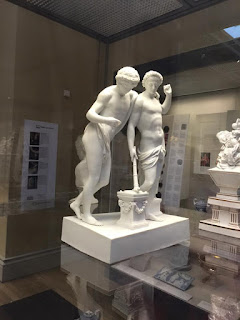ON the 19th of February we celebrate the birthday of Minerva/Athena, goddess of wisdom, trade and commerce, arts and crafts, music, poetry, strategy and weaving.
She was said to have invented numbers and medicine and to have taught weaving.
She knows war, being the goddess of strategy, but understands that there are both winners and losers, and rather than standing in triumph over her enemies, she empathises with them.
Ovid called her "Goddess of a thousand works" and she can be approached in many ways. One of her symbols is the spider, as it weaves its web, she weaves the web of destiny, and into it the strands of magic.
If you have been a victim of theft, then you can also appeal to Minerva for restitution. Image: Athena/Minerva by Chrisra.
19 de fevereiro é o aniversário de Minerva / Athena , deusa da sabedoria, comércio, artes e artesanato , música, poesia , estratégia e tecelagem. Ela foi dito ter números inventados e medicina e ter tecelagem ensinado. Ela sabe guerra, sendo a deusa da estratégia, mas entende que há vencedores e perdedores, e ao invés de em pé no triunfo sobre os seus inimigos , ela empathises com eles. Ovid a chamou de " Deusa de mil obras ", e ela pode ser abordada de várias maneiras. Um de seus símbolos é a aranha , uma vez que tece sua teia , ela tece a teia do destino , e nele os fios de magia. Se você tiver sido vítima de roubo, então você também pode apelar para Minerva de restituição .
19 de de febrero es el cumpleaños de Minerva / Athena , diosa de la sabiduría , el comercio y el comercio, artes y artesanías , la música , la poesía , la estrategia y el tejido. Ella se dice que tienen números inventados y medicina y tener tejer enseñado. Ella sabe que la guerra , siendo la diosa de la estrategia, pero entiende que existen ganadores y perdedores, y en lugar de pie en el triunfo sobre sus enemigos, empatiza con ellos . Ovidio la llamó " la diosa de un millar de obras " y que se puede abordar de muchas maneras . Uno de sus símbolos es la araña , mientras teje su tela, teje la red de destino, y en ella los hilos de magia. Si usted ha sido víctima de un robo , entonces también puede apelar a Minerva para la restitución.


















































